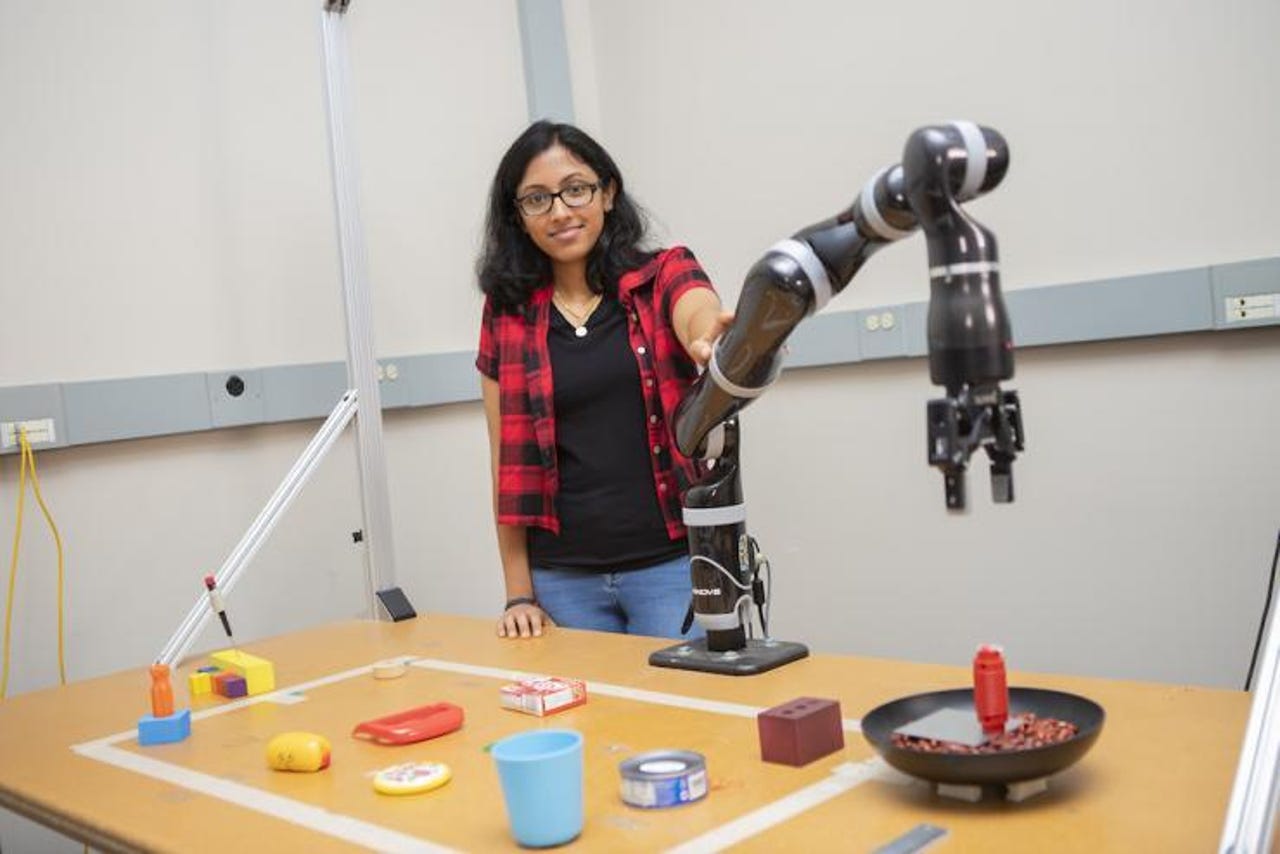Apollo-inspired robot hacks together tools using everyday objects


Space
The ability to create tools from everyday objects requires creativity, abstract thinking, and problem-solving. As such, that complex ability has been used emblematically to differentiate so-called "intelligent" animals from those that merely follow some basic instinctive code.
By that measure, robots have now joined the ranks of the intelligent. That's thanks to researchers from Georgia Tech's Robot Autonomy and Interactive Learning (RAIL) research lab, who has created a robot that can use resources at hand to complete tasks that require tools. According to the researchers, the robot possesses a novel capability to reason about shape, function, and the attachment of unrelated parts.
According to RAIL, the inspiration comes from Apollo 13, during which crew members had to hack together a modified carbon dioxide removal system from available parts.
Following suit, RAIL lab researchers, led by Associate Professor Sonia Chernova and drawing on work from former Georgia Tech Professor Mike Stilman, created a strategy by which their robot first examines the shapes of each component to diagnose how one might attach to another.
In this case, function follows form. The robot relies on machine learning to match shapes of the tools it cobbles together with potential applications that can facilitate a particular outcome. One example from the team concerns the concavity of bowls, from which the robot deduces the structures that can hold liquid. That knowledge is crucial if the robot decides the tool it needs for a specific job is a spoon, say.
During the study period, the robot created tools such as hammers, spatulas, scoops, squeegees, and screwdrivers and employed them appropriately in various tasks.
"The screwdriver was particularly interesting because the robot combined pliers and a coin," Lakshmi Nair, a Ph.D. student in the School of Interactive Computing and one of the researchers on the project, explains in a Georgia Tech College of Computing article. "It reasoned that the pliers were able to grasp something and said that the coin sort of matched the head of a screwdriver. Put them together, and it creates an effective tool."
The work could be especially useful in disaster recovery applications, where robots would be entering unstructured spaces, potentially without operators knowing what to expect beforehand. So far, the Georgia Tech robot only accounts for the shapes of objects, not their density or the materials they're made from.
"People reason that hammers are sturdy and strong so you wouldn't make a hammer out of foam blocks," Nair said. "We want to reach that level of reasoning in our work, which is something we're working on now."